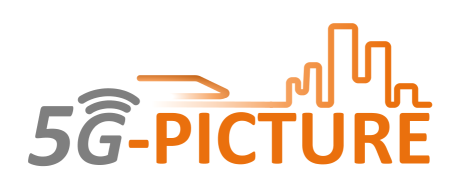Objectives
5G-PICTURE proposes a paradigm shift, from the traditional RAN and recent C-RAN to the “Dis-Aggregated RAN” (DA-RAN) approach. DA-RAN is a novel concept adopting the notion of “disaggregation” of HW and SW components across the wireless, optical and compute/storage domains. “Resource disaggregation” allows decoupling of HW and SW components creating a common “pool of resources” that can be independently selected and allocated on demand. These HW and SW components form the basic set of building blocks that, in principle, can be independently combined to compose any infrastructure service. Apart from increased flexibility, disaggregation, due to its modular approach, offers enhanced scalability, upgradability and sustainability potential that are particularly relevant to 5G environments supporting enormous and continuously growing number of end-devices and services. To exploit the concept of disaggregation in RAN environments, novel 5G technology solutions are needed to increase the density and power efficiency of the “pool of resources”, supporting at the same time high bandwidth connectivity between them. These will rely on i) hardware programmability: allowing HW repurposing to enable dynamic on demand sharing of resources and ii) network softwarisation: enabling migration from the traditional closed networking model, focusing on network entities, to an open reference platform instantiating a variety of network functions. Such novel networking approaches can facilitate increased functionality and flexibility infrastructures, offering simplified management and advanced capabilities including slicing and virtualisation that allow the disaggregated resource pool to be shared and accessed remotely. On-demand selection and allocation of these resources (flexible mix-and-match) will enable provisioning of any service without the prerequisite of owning and installing any specific HW or SW, adopting novel approaches such as the notion of service chaining (SC). Network slicing and service chaining will be facilitated adopting architectural models such as the SDN reference architecture and the ETSI NFV standard.
